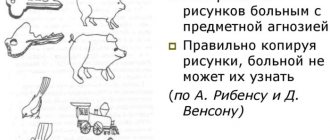Apperception is one of the fundamental properties of human perception. Just as our eyes focus on a specific object, providing a clear image, our brain focuses on a specific image, fixing it in our perception. Apperception is not innate, but is formed in a person as he accumulates life experience. Today we will talk about what it is, what it is like, how it manifests itself and what significance it has for our lives.
History of the concept
Apperception was first described by the scientist Leibniz. In his works he talked about reflex acts and perception. Following Leibniz, apperception was studied by Kant, who used this term to designate self-consciousness.
Each scientist interpreted the method of perception in his own way:
- Leibniz argued that apperception is the sensations that a person is aware of.
- For Kant, apperception was an innate ability of consciousness, which is accompanied by a natural process of cognition of the surrounding world and oneself from the inside.
- According to Herbart, perception is the fusion of new ideas with those deposited in consciousness from the past.
- Alfred Adler created such a concept as the apperception scheme. We are talking about the totality of individual ideas of a person that relate to the surrounding world and people. According to him, the behavior of an individual in most cases is determined by a psychological process.
- The scientist Wundt was inclined to believe that apperception is a mental process through which a person becomes aware of his thoughts and perceptions.
In the 19th and 20th centuries, various scientists began to develop the concept of perception. With its help, experts explained new facts using past experience.
History of the term
The author of the concept is considered to be the German scientist Gottfried Leibniz (1646-1716). True, by modern standards his understanding of what apperception is looks very unusual. He viewed it as a form of activity of the human soul.
Immanuel Kant (1724-1804) introduced the concept of transcendental apperception. From his point of view, apperception could be determined both by a person’s life experience (empirical) and by factors beyond human understanding (transcendental).
The German scientist Johann Herbart (1776-1841), considered the founder of empirical psychology, devoted a lot of time to studying how the process of awareness of perceived sensations occurs. It was he who made the word “apperception” a purely scientific (and not philosophical or spiritual) term. He also introduced the concept of “apperceptive mass,” which characterizes accumulated knowledge.
Wilhelm Wundt also devoted a significant part of his research work to apperception . He viewed apperception as an intellectual process of accumulation, structuring and use of life experience, which is necessary for our consciousness to quickly identify familiar objects and phenomena.
Types of apperception
Apperception in psychology is a human state that depends on the perception and content of the individual’s psychological life, the characteristics of the individual, and also existing experience. People remember the most important moments for themselves, which are related to personal interests or hobbies.
There are the following types of apperception:
| Name | Description |
| Transcendental apperception | A complex term proposed by the scientist Kant. He was sure that apperception is present in humans from birth, as a subject of self-consciousness. The phenomenon acts more as a basis for new data and the amount of experience does not matter at all. Transcendental apperception is part of the human personality, regardless of the accumulated knowledge of a lifetime. |
| Empirical apperception | Subjective unified consciousness, which is formed thanks to the acquired knowledge and accumulated experience of a person. |
Activation of apperception occurs when it is necessary to formulate a general idea using personal impressions. By perceiving and realizing new information, a person changes. His existing experience is complemented and his knowledge is expanded.
Examples of apperception
To better understand apperception, let's look at a few examples that we often encounter in everyday life:
- When we communicate with a person whom we do not trust for some reason, behind his every word we see a lie or an attempt to manipulate;
- Sometimes, instead of a word written in capital letters in a store window or on a sign, we may misunderstand another word that relates to our current needs or expectations;
- everyone quickly identifies images related to their profession and hobbies, sometimes finding them even where they should not be;
- a choreographer in everyday life notices that some people move smoothly, while others move rather awkwardly (although to any other person their movements look the same);
- when we are looking for a certain thing among many others, we do not immediately find it, but then we do not lose sight of it, because we have fixed its image in our minds;
- a hungry person is more likely to observe food-related images (such as cafe and restaurant signs).
You may have seen humorous texts in which all the letters except the first and last are mixed up. It’s easy to read such a text, and sometimes you don’t even notice how mutilated the words are. This is a perfect example of apperception because this "trick" only works for the native language. But if you read English fluently, you will find it more difficult to read English text with jumbled letters than Russian.
Apperception is present always and everywhere - in communication, relationships, work, study and even in ordinary observations.
Classification of apperception in psychology
There is a certain classification of apperception, taking into account modern psychological teachings:
| Name | Description |
| Temporal apperception | Emotional perception of the surrounding world. Temporary apperception is formed due to the emotions, feelings, mood and sensations in a person that prevail in a certain situation. The perception of the surrounding world occurs situationally under the influence of emotional attitudes. A change in temporal apperception is observed as a person’s mood changes. |
| Sustained apperception | The formation of perception occurs in each case individually. Stable apperception is built through a person’s habits, worldview, education and views. The same goes for education, personal opinion and intellectual development. |
| Social apperception | A separate type of apperception, which is formed during the perception of the surrounding world. These are various kinds of phenomena or objects. Large groups of people are analyzed using social apperception. Each person develops a more biased and subjective opinion compared to the perception of objects or phenomena. |
Apperception is a complex psychological process that helps a person perceive the world around him, various phenomena, objects, and people. He is able to put forward certain hypotheses regarding all these objects, guided by old knowledge and skills, and acquiring new ones.
Psychology test, 90 questions with answers
1. Psychology is: A) the science of the inner world of man, of the interaction of man with the outside world as a result of active reflection of this world; B) one of the fundamental scientific concepts, reflecting complex and diverse manifestations of the internal objective world; C) the science of the development and functioning of the human psyche as a special form of life activity.
2. Mental phenomena of a person are: A) mental processes (feelings, cognitive processes, will; B) mental states (emotional uplift, fatigue, etc.); C) mental properties (temperament, character, abilities); D) mental education (knowledge, abilities, skills, habits); D) all answers are correct.
3. Mental states: A) this is what is inherent in a person throughout his life or over a fairly large period of time (temperament, character, abilities, persistent characteristics of mental processes in an individual); B) longer processes compared to other mental phenomena (can last for several hours, days or even weeks), more complex in structure and formation; C) elementary mental phenomena, lasting from a fraction of a second to tens of minutes and generating certain products or results.
4. Mental formations are: A) what becomes the result of the work of the human psyche, its development and self-development; B) mental processes, states and properties, as well as human behavior; C) a system of concepts that explain the patterns and properties of the human personality.
5. Indicate the unnecessary of the listed methods of psychological and pedagogical research: A) observation; B) conversation; B) interviewing; D) testing; D) studying the products of activity; E) production; G) experiment; H) survey.
6. Indicate the unnecessary one from the listed states of consciousness: A) psychological; B) naive; B) ordinary; D) rational; D) mystical; E) reflexive. G) pathological. Answer: B)D) 7. Repression is: A) an unconscious mechanism by which impulses and feelings that are unacceptable to the individual are attributed to an external object and penetrate consciousness as an altered perception of the external world. B) such a mechanism, as a result of which thoughts, memories or experiences unacceptable to a person are, as it were, “expelled from consciousness and transferred to the sphere of the unconscious, but at the same time continue to influence the behavior of the individual, manifesting itself in the form of anxiety, fear, etc. ; C) the process of eliminating, ignoring traumatic perceptions of external reality (otherwise the “ostrich position”). D) a mechanism in which a person sees another in himself and transfers to himself the motives and qualities inherent in another person.
8. Regression is: A) a mechanism consisting in the fact that a person, in his behavior when responding to very important situations, returns to early, childhood types of behavior that were successful at that stage; B) a mechanism for transferring action from an inaccessible object to an accessible one (for example, transferring attitudes towards a boss to family members); C) the struggle of one’s own “I” with oneself, turning to sublimation.
9. Sensation is: A) the activity of special nervous apparatus, leading to the creation of images of objects and phenomena; B) reflection of individual properties of objects that directly affect our senses; C) information that enters the brain and on the basis of which a holistic image is formed.
10. Perception is: A) a holistic reflection of objects and phenomena of the objective world with their direct impact at the moment on the senses; B) the smallest magnitude of differences between stimuli when the difference between them is perceived. C) the functional state of the sensory organs, depending on the sensitivity of the analyzers of the corresponding type.
11. Motor sensations are also called: A) interoceptive; B) relevant; B) distant; D) proprioceptive.
12. Exteroceptive sensations do not include: A) taste; B) olfactory; B) auditory; D) visual; D) motor.
13. The properties of sensations do not include: A) duration; B) intensity; B) quality; D) interoception.
14. What does not apply to types of perception: A) perception of activity; B) perception of space; B) perception of movement; D) perception of time; D) perception of a person by a person; E) perception of objects and phenomena of the surrounding world; G) perception of the world;
15. Who is the author of this theory of attention: attention is one of the components of orientation-research activity. It represents control over the content of an image, a thought. Another phenomenon currently present in the human psyche: A) T. Ribot; B) P. Ya. Galperin; Q) A. A. Ukhtomsky?
16. Voluntary attention is the kind of attention: A) that comes after involuntary attention, but is qualitatively different from it; B) which develops as a result of training and education; C) which arises without a person’s intention to see or hear anything, without a predetermined goal, without effort of will; D) which is characterized by activity, purposeful concentration of consciousness, maintaining the level of which is associated with certain volitional efforts.
17. Indicate which of the listed properties of attention is incorrect: A) propaedeuticity; B) concentration; B) stability; D) volume; D) distribution; E) switchability.
18. Memory is: A) processes associated with the passage of impulses through a certain group of neurons, causing electrical and mechanical changes at the places of their contact and leaving behind a physical trace; B) processes of storing information due to chemical changes; C) the processes of forming connections between different ideas and determined not so much by the content of the memorized material, but by what a person does with it. D) the processes of memorizing, preserving and reproducing a person’s experience.
19. Memorization is: A) a memory process, as a result of which something new is consolidated by associating it with what was previously acquired; B) the passive process of retaining information obtained on the basis of imprinting.
20. Indicate an unnecessary factor influencing forgetting: A) age; B) the nature of the information and the extent of its use; B) interference; D) imprinting; D) suppression.
21. What is the basis for the classification of the following types of memory: cognitive, emotional, personal? A) degree of comprehension; B) installation for a while; B) the nature of the material; D) modality.
22. Indicate the incorrect name of the Law of Memory: A) Law of Repetition; B) Law of context; B) Law of inhibition; D) Law of optimal length; D) Law of volume of knowledge; E) Law of installation; G) The law of strengthening the initial impression; 3) there is no wrong name.
23. To remember material for a long time, you need to memorize it in several stages. Indicate the incorrect definition of the stage: A) immediately after memorization; B) 20-30 minutes after memorization; B) a day after memorization; D) 1 hour after memorization; D) 2-3 weeks after memorization.
24. Imagination is: A) the mental process of creating new images based on what was previously perceived; B) the mental process of creating images according to description; C) the mental process of creating images at a person’s own request; D) mental process, the emergence of new images formed spontaneously, against the will.
25. Agglutination is a technique of imagination: A) in which some part or detail in the created image is isolated and emphasized; B) an increase or decrease in the object, a change in the number of parts of the object or their displacement; C) combination, merging of individual elements or parts of several objects into one image; D) highlighting the essential, repeating in homogeneous phenomena and embodying it in a specific image.
26. The creation of the image of G. Pechorin by M. Yu. Lermontov was based on the technique of imagination: A) agglutination; B) accentuation (sharpening); B) schematization; D) hyperbolization; D) typing.
27. From the following, indicate the incorrect stage of thinking: A) pre-conceptual consciousness; B) conceptual consciousness; B) post-conceptual consciousness.
28. Indicate which of the following is not a form of the thought process: A) concept; B) judgment; B) inference; D) problem solving; D) analogy.
29. What basis is used to define this type of thinking as discursive and intuitive: A) the nature of the problems being solved; B) the degree of deployment of the tasks being solved; C) the content of the tasks to be solved?
30. Indicate what is not a type of thinking: A) productive thinking; B) involuntary thinking; B) autistic thinking; D) realistic thinking; D) analytical thinking; E) theoretical thinking; G) individual thinking; 3) practical thinking.
31. What are inclinations: A) the possibility of an individual’s development, which manifests itself every time before a new task arises. B) congenital anatomical and physiological characteristics of the brain, nervous systems, sensory and movement organs, functional characteristics of the human body. C) resourcefulness, resourcefulness, ability to get along, manage, arrange things. D) any skills and abilities a person possesses, regardless of whether they are innate or acquired, elementary or complex. D) individual psychological characteristics formed in activities based on abilities that distinguish one person from another, on which the success of the activity depends?
32. A person’s experience of his relationship to what he does or learns, to other people, to himself is called: A) perception; B) feelings; B) emotions; D) feelings and emotions; D) sensations.
33. A simple, direct experience at a given moment associated with satisfaction or dissatisfaction is called: A) feeling; B) emotions; B) love.
34. Will is: A) an unconscious desire for a person to overcome difficulties in the process of activity; B) tension arising in connection with the objective need to solve the problem; C) a person’s conscious overcoming of difficulties on the path to carrying out an action.
35. Which of the characteristics refers to the choleric type of temperament: A) strong, balanced, agile; B) strong, balanced, inert; B) strong, unbalanced with predominant excitation over inhibition processes. D) weak, with increased sensitivity, low reactivity?
36. Character is: A) the characteristics of a person, manifested through his sensations, perceptions, determined by the type of nervous system, the dynamics of mental processes, hereditary factors; B) a set of unstable, changing psychological properties of a person, manifested depending on the circumstances and conditions of the social environment. C) a set of stable individual psychological properties that manifest themselves in a person’s life in the form of his attitude towards people around him, towards himself, towards activities, other various circumstances of life, etc.
37. What type of character accentuation does the following characteristic belong to: increased anger, irritability, hot temper. Tendency to impulsive behavioral reactions. One of the most difficult and unfavorable for social adaptation, educational influences and social correction is the type of people prone to illegal behavior: A) psychosthenic; B) cycloid; B) sensitive; D) hyperthymic; D) epileptoid. E) schizoid. 38. Personal orientation is: A) the expression of will and demand of one person, aimed at unconditional submission and fulfillment of the assigned task by another person; B) a system of stable human motivations that determines his social activity, selectivity of attitudes towards various phenomena, towards one or another socially useful or, on the contrary, antisocial activity.
39. What is pedagogy? From the proposed answers, choose the correct one: A) Pedagogy studies the patterns of child development and determines the ways of his upbringing. B) Pedagogy is the science of upbringing, education and training of people. C) Pedagogy is the art of influencing the teacher on the student in order to form his worldview. D) Pedagogy deals with the study of issues of training and education of the younger generation. D) Pedagogy is the science of human education.
40. What do you understand by principles of teaching: A) principles of teaching are the initial rules and patterns that indicate the ways of organizing the cognitive activity of students; B) the principles of didactics should be understood as the starting points that determine the content, organizational forms and methods of educational work in accordance with the purpose of education and training. C) the principles of teaching express the general patterns and methods of the teacher’s teaching activities in accordance with the needs of the socio-economic formation?
41. What is encouragement: A) encouragement is a method of pedagogical influence on a student, expressing a positive assessment of his behavior from the standpoint of the interests of classmates and with the aim of consolidating positive qualities; B) encouragement is a method of education that involves showing gratitude to the student; C) Encouragement should be understood as a method of education when the teacher encourages the student in order to form a positive attitude towards his responsibilities; D) encouragement - a method of rewarding good deeds; D) encouragement - a method of stimulating the student’s activity?
42. Which component of teaching activity is associated with the ability to establish and maintain contact with people: A) constructive; B) communicative; B) value-oriented; D) organizational? Answer: 43. What is the main social function of a teacher: A) conveys the social experience of older generations; B) teaches children; C) raises children?
44. What should a teacher look like: A) fashionable, extravagant, dressed for youth, regardless of age; B) appearance and clothing do not matter; C) as an English gentleman, after he leaves there is a good impression, but it can be very difficult to remember what he was wearing; D) conservative style, two or three steps behind fashion?
45. What is called development: A) development is the process and result of qualitative changes in the human body; B) development is the process and result of quantitative and qualitative changes in the human body. It is associated with constant, incessant changes, transitions from one state to another, ascent from simple to complex, from lower to higher; C) development is the process of becoming a person as a social being under the influence of all factors without exception?
46. The nervous system is A) a set of nerve formations in the human body and vertebrate animals; B) nerve fibers that conduct impulses; B) nerve fibers innervating skeletal muscles; D) nerve fibers that fill the space in the brain;
47. Interhemispheric asymmetry of the brain is A) non-equivalence, a qualitative difference in the contribution that the left and right hemispheres of the brain make to each mental function; B) qualitative characteristics of sensations; C) dominance of the right hand as a powerful means of adaptive human behavior; D) asymmetrical localization of the nervous apparatus of the second signaling system;
48. Places of functional contacts formed by neurons are called A) synapses; B) mediators; B) receptors; D) neurons;
49. Part N.S. controlling the condition of the heart, internal organs, muscles, glands and skin is called: A) peripheral; B) somatic; B) vegetative; D) central;
50. The psyche is A) a reflection of physiological processes in the brain; B) an independent phenomenon, independent of the brain; C) a product of the brain, a subjective image of the real world; D) brain biocurrents;
51. According to the topographic principle N.S. divided into A) central and peripheral; B) central and somatic; B) central and vegetative; D) vegetative and somatic
52. The part of the brain, consisting of two hemispheres and including the gray matter of the cortex, subcortical nuclei, nerve fibers that form the gray matter, is called _____________ brain A) diencephalon; B) average; B) front; D) rear;
53. The main components of the hindbrain are A) the medulla oblongata and spinal cord; B) pons and cerebellum; B) thalamus and hypothalamus; D) occipital lobe, temporal lobe
54. The central nervous system includes those parts of the nervous system that lie inside: A) muscles; B) skull and spinal column; B) circulatory system; D) digestive organs;
55. Nerve fibers that conduct impulses from the central nervous system to muscles and internal organs are A) efferent fibers; B) nerve impulse; B) afferent fibers; D) brain;
56. Nerve fibers, processes of nerve cells that have a myelin sheath, are A) an axon; B) gray matter; B) dendrite; D) white matter of the brain;
57. The section of the nervous system that performs the functions of connecting the body with the external environment through skin sensitivity and sensory organs is the nervous system A) peripheral; B) central; B) somatic; D) vegetative;
58. The diencephalon is a part of the brain that includes A) the amygdala; B) occipital lobe; B) hippocalypse and basal ganglia; D) thalamus and hippothalamus;
59. The first stage of sleep is characterized by A) an increase in the threshold for perception of sensory stimuli; B) intensity of activity during wakefulness; C) replacing the alpha rhythm with low-amplitude oscillations of various frequencies; D) regular appearance of a fusiform rhythm;
60. The third and fourth stages of sleep are characterized by A) the command of high-amplitude slow waves; B) regular appearance of a spindle-shaped rhythm; C) replacing the alpha rhythm with low-amplitude oscillations of various frequencies; D) increased tone of the sympathetic nervous system;
61. The appearance of negative emotions is associated with: A) characteristics of individual behavior of humans and animals; B) the lack of available information about ways and means of meeting current needs; C) redundancy of information about the possibility of satisfying the need; D) characteristics of a given situation;
62. The structure underlying the limbic system, which includes: the hippocampus, fornix, mammillary bodies, anterior nucleus of the thalamus and cingulate gyrus, is: A) substantia nigra; B) Papets ring; B) reticular formation; D) blue spot;
63. A method for studying pupillary reactions, used for people’s subjective attitude to certain external stimuli: A) oculography; B) electromyography; B) pupilometry; D) pneumography;
64. A stressor is: A) a stimulus that causes a stress reaction; B) reaction of various brain structures to irritation; B) the body’s defense mechanisms; D) the relationship between the parts of the autonomic nervous system;
65. The ring of Papetz underlies A) the medulla oblongata; B) limbic system; B) frontal zones of the cortex; D) cerebellum;
66. The flight reaction in a cat is caused by irritation of A) the pituitary gland; B) cerebellum; B) hypothalamus; D) corpus callosum;
67. Minute blood volume is used when studying: A) the respiratory system; B) autonomic nervous system; B) endocrine system; D) cardiovascular system;
68. Pathological sleep does not include: A) lethargic; B) narcotic; B) somnambulism; D) monophasic;
69. The emergence and course of emotions is closely related to the activity of: A) the cerebellum; B) corpus callosum; B) modulating systems of the brain; D) pituitary gland;
70. Forming during life under the influence of social influences of a person’s HMF. A) do not recover from traumatic exposure; B) remain unchanged; B) undergo minor changes; D) change their psychological structure;
71. Author of the theory of general adaptation syndrome: A) V. Geller. B) G. Selye; B) D. Olds; D) R. Davidson;
72. The arrangement of parts or elements of the whole in order from highest to lowest, with each of the higher levels endowed with special powers in relation to the underlying ones: A) adaptation; B) hierarchy; B) heterarchy; D) system;
73. Localization of the beta rhythm is most pronounced: A) in the parietal, temporal zones of the cortex; B) in the precentral and frontal cortex; B) in the hippocampus; B) in areas of the cortex bordering the area affected by the tumor;
74. Computed tomography can be used to study: A) metabolism and blood supply to the brain; B) cardiovascular system; B) human cognitive sphere; D) emotionally - the need sphere;
75. When solving problems that require maximum concentration of attention, the following is recorded on the EEG: A) delta rhythm; B) gamma rhythm; B) alpha rhythm; D) beta - rhythm;
76. The structure of the brain, located under the visual thalamus and responsible for metabolism, coordination of vegetative functions with mental and somatic functions, regulation of sleep and wakefulness, adaptation of the body to the environment: A) pituitary gland; B) pineal gland; B) hypothalamus; D) thalamus;
77. Partial or complete loss of memory: A) hypoamnesia; B) dementia; B) delirium; D) amnesia;
78. Two main directions of neuropsychological analysis of the problem of interhemispheric brain asymmetry and interhemispheric influence can be distinguished: A) neuropsychological and psychophysical; B) neuropsychological and neurolinguistic; C) psychophysical and zoopsychological; D) neuropsychological and neurosurgical.
79. The cortex is divided by fissures and grooves into lobes: 1) frontal, 2) temporal, 3) parietal, 4) olfactory, 5) occipital: A) 1, 3, 4, 5; B) 1, 2, 5; B) 1, 2, 3, 4, 5; D) 1, 2, 3, 5.
80. The gray matter of the brain is a collection of: A) neurons; B) synapses; B) vascular elements; D) glial cells;
81. The central section of the nervous system of vertebrates and humans is: A) the spinal cord; B) brain; B) lymphatic system; D) brain and spinal cord.
82. A special human mental function, defined as the process of communication through language, is called: A) thinking; B) speech; B) speech style; D) communication.
83. The functional specialization of the hemispheres gradually levels out towards: A) old age – after 60 years; B) 29-30 years old; B) 40-50 years; D) 14 years old;
84. The thalamus is: A) a section of the diencephalon, responsible for the generation of rhythmic activity and disseminating synchronized influences on the overlying parts of the brain; B) a modulating system of the brain that determines motivational arousal; C) the part of the brain that releases adrenaline into the blood; D) a system in the central nervous system responsible for the level of wakefulness;
85. A layer of gray matter consisting of nerve cells - neurons, covering the cerebral hemispheres - is A) the amygdala, B) the hypothalamus; B) cerebral cortex; D) hippocampus;
86. The autonomic nervous system is under the control of: A) the pineal gland; B) hypothalamus; B) corpus callosum; D) pituitary gland;
87. Individuality is A) a system of multidimensional and multi-level connections, covering all sets of conditions and stable factors of the individual development of an individual; B) the degree of complexity, randomness or automation of the functional system; C) the process of behavior correction, based on information received by the brain from the outside about the results of reality; D) psychophysiological mechanism for predicting and assessing activity;
88. Switching off voluntary cortical activity while maintaining partial contact with the environment is possible during A) diphasic sleep; B) hypnotic; B) pathological; D) lethargic;
89. Physiological concept borrowed from the concept of functional systems by P.K. Anokhin used to explain the physiological basis of higher mental functions is: A) neuropsychological syndrome; B) system analysis; B) functional system; D) factor analysis. Answer: B) 90. The modeling system of the brain, which determines motivational arousal and is responsible for the emotional state of a person, is closely related to the activity of: A) the reticular formation; B) limbic system; B) vegetative system; D) cerebral cortex;
Mechanisms of perception
Apperception in psychology is a person’s perception that is formed throughout his life. Experience accumulates, an internal state and certain attitudes appear.
To understand the mechanism of apperception, it is necessary to consider its application in real life. If you present documents with intentional errors to an inexperienced person, he will not notice them. A professional, in turn, will immediately identify shortcomings.
Perception in psychology is formed according to a certain mechanism in which the following human abilities take part:
- thinking with the help of some stereotypes;
- identification of surrounding people using a certain personality type;
- use of reflexive mechanisms.
A person also uses empathy to perceive others. A phenomenon characterized by design abilities. The individual, forming his perception, transfers the feelings of others onto himself.
Manifestations
Apperception is a complex psychological process that relates to the perception of phenomena, objects, and people. Without it, many other psychological processes could not take place.
When a person comes to a seminar where an uninteresting topic is discussed, the incoming information is partially absorbed. If the lecturer changes the topic, touches on a question that interests a person, the individual will immediately pay attention to the narrator, begin to listen, and assimilate the entire flow of data. In this situation, the first part of the lecture took place with apperception, but the second did not.
Diagnosis of apperception
The study of personality perception is carried out using special tests:
| Name | Description |
| Symbol apperception test | The person is shown specific cards with images. The specialist clarifies that all the symbols are taken from fairy tales and myths. A person needs to classify cards in the most convenient way for him. Next, complete the symbols and divide them into categories (love, game, power). The test allows you to identify a person’s priorities, values and semantic orientation of the individual. |
| Research into thematic apperception | In this situation, the specialist shows black and white photographs, tables, images. Cards are selected taking into account the characteristics of the subject (age, gender). A person needs to create stories by looking at images. |
Diagnostics of apperception is carried out if it is necessary to differentiate a person’s condition or if he is being tested before being appointed to an important post. Testing is also necessary to determine if a patient is depressed or may be suicidal.
Perception and apperception
Perception and apperception differ from each other in the mechanism of perception of the surrounding world. In the first case, a person simply sees, hears and feels. Information is perceived, but comprehension does not occur.
With apperception, the formation of consciousness and receptivity of things, phenomena, objects, people is observed. The information received is comprehended using the senses, emotions, desires, ideas and thoughts.
Through apperception, an individual can also understand his own inner world, guided by views, desires and interests. Numerous mental components characterize a person’s personality.
Apperception in psychology
Understanding the world and life occurs through the prism of one’s own experience. It could be fear, complexes or failures. This also includes various situations in life that a person no longer wants to remember, experiences that arose against the background of negative or positive circumstances. The same goes for the concept of good and evil.
In most cases, perception and apperception are two components that complement each other. A complete picture is formed due to the fact that all experienced moments are stored in memory, whether they are important or not. And if necessary, a person can return to them again to conduct a full analysis.
Transcendental unity of apperception
Each person has the ability of transcendental unity of apperception, which is understood as the unification of new knowledge with previous life experiences. In other words, it can be called learning, development, change. A person constantly acquires new knowledge, information, and masters skills. This combines with what has already been learned, creating a new way of looking at yourself, at people, at the world in general.
The transcendental unity of apperception includes three factors:
- Deduction is the extraction of a specific conclusion from general information. Through perception we move on to apperception - the knowledge of the information we need.
- Contemplation is an observation that can then be disassembled and analyzed.
- Imagination is the representation of those pieces of information that complement each other.
A person is mistaken when he thinks that he sees the world around him as it really is. In reality, a person sees everything in a distorted spectrum due to the influence of certain factors on his perception of the world. These may be beliefs about what is good and what is bad, concentration on some ideals and rejection of others, prejudices and complexes about certain phenomena in life. There are many factors that contribute to misperceptions of the world. How does this manifest itself in the outside world?
People are known to make decisions in advance and then create conditions in which their previous conclusions are confirmed. A person consciously notices cases that confirm his suspicions and expectations. He notices only what he wants to see - examples that confirm his prejudices. For example, a man who suspects his woman of cheating will see evidence of cheating in every interaction with other members of the opposite sex. Such a man will see not simple business communication between his woman and another man, but clear signs of flirting, which will ultimately lead to sex. He sees what he wants to see, and not what actually is.
Stereotypes play a role. This is very clearly manifested in the desire to please every man. For example, a woman brings a man beer because she believes that all men drink, given that her own first marriage broke up due to alcoholism. The question is, why persist in a stereotype if it has already destroyed previous relationships? Unfortunately, this is what many people do. In their normal state of mind, they may condemn or encourage certain actions of a person, but when it comes to winning the favor of another person, they forget that stereotypes can play a cruel joke if you use them. What do you think will destroy a woman's marriage with the man to whom she brought beer? That's right, because of alcoholism, as in the first case.
A person, when criticizing another person, speaks not about him, but about what he saw in him. He criticizes those qualities that are inherent in himself. And he reacts to them negatively because he cannot stand these qualities in himself. A person is always irritated by what he himself has in others. A lot of judgment is a sign of a principled person. The more principled you are, the more you judge others. This game is the great defense mechanism of the human ego. Selfishness never allows its owner to see his mistakes and shortcomings, because this kills him. By covering up the imperfections of the world and the people around us, the ego protects a person from studying his own shortcomings.
Another big distortion of the worldview is the so-called errors. It is more common to say that something was done wrong than to look at the situation from a different angle. In fact, there are no mistakes! They simply don't exist! There are only situations that people consider mistakes. But they are not errors in themselves.
Examples of apperception of perception
Every person has the ability of apperception. All people individually perceive the world around them, using their own skills and knowledge.
Examples of apperception of perception:
- When a person watches a certain program that talks about new films, he remembers the picture that should be released in theaters the other day. At the same time, the presenter of this program can also additionally talk about the main characters or individual scenes. However, the release time of the movie turned out to be important information for the viewer.
- The master who makes skis will evaluate the product for mountain skiing, taking into account his professional skills and knowledge. This concerns the quality of the material and its processing. A skier who is going to buy skis for vacation first of all evaluates the elasticity, strength of the product and other similar characteristics.
- While driving to work, a person does not pay attention to surrounding details, things and people. What is important to him is the number of the minibus on which he needs to get to work and all the accompanying issues associated with the trip.
- Many people use knowledge and experience gained in the past to answer questions. If, for example, a man left a woman in order to get him back, she will look for all kinds of means and useful information within herself.
- A distrustful person will always see in his interlocutors deception, a dirty trick, or a desire for manipulation.
- While listening to any music, an individual identifies familiar and pleasant sounds that he has already heard before.
Many people often choose a vacation spot based on their emotions and feelings that they experienced the previous weekend. In most cases, focusing on sensations, beliefs or emotions causes a person to make limited decisions.
The same goes for conclusion, choice. A person will give more preference to those moments that he associates with positive events, avoiding negativity and negative emotions.
What is apperception?
Apperception is a property of the psyche, which consists in the conditional perception of objects in the external world, depending on a person’s life experience, his worldview, moral and moral beliefs, profession, interests, needs, expectations and other factors. Apperception implies that in the image he sees, a person recognizes an object well known to him, endowed with certain properties, or a scene from life.
The term "apperception" is derived from the Latin words ad (to, approaching) and percipere (to perceive) or perceptio (perception). The author of this concept is considered to be the German philosopher Gottfried Leibniz. He divided perception into two components:
- perception is a sensation that has already been perceived, but has not yet been comprehended;
- Apperception is a meaningful sensation, a perceived and identified image.
It is worth noting that in modern psychology the term “perception” is used to refer to perception in general, and not just its unreflective component, as in Leibniz.
By looking at the same outlines, people can identify different objects in them. Many optical illusions are based on this phenomenon, as well as psychological tests such as the Rorschach test or the Holtzman inkblot technique (which is an improved version of the Rorschach test).
Apperceptive distortion
Apperception in psychology is a complex process that requires careful study.
To make the tests as effective as possible, experts use the following forms of distortion:
| Name | Description |
| Simple projection | The state of affect, which occurs under certain conditions and circumstances, greatly influences the formation of apperception and can even change it. A person develops feelings towards the people around him, qualities and emotions. He can transfer them to the interlocutor. In simple words, feeling hatred towards one person, he thinks that he is also not loved, like himself. |
| Sentization | A specific direction in the psychological treatment of an individual. The main goal of therapy is to change the behavior of the person being treated. |
| Externalization | A state in which the inner world of a person is analyzed using his individual characteristics. |
| Rear projection | A person ascribes to himself numerous qualities that he does not possess, but really wants to obtain them. Contact with people around you in this situation is poor. A person attributes negative qualities to them. |
Apperceptive distortions can lead to the appearance of hallucinations that are distinguishable from each other. This is explained by the fact that a person makes volitional efforts. He unknowingly provokes them, and at the same time receives great pleasure.
Properties of perception
Perception is characterized by its properties, and experts have identified seven properties:
- Selectivity - when choosing an object, a person focuses his attention on it, for example, on a book in a bookstore, all other objects seem to be relegated to the background;
- Objectivity is the assignment of an object to a certain category, for example, round, cute, green, long, growling, etc. This process may not occur immediately, so it takes time for a person to determine the type of object. Subjectivity influences human behavior - an egg known to everyone does not cause doubts and caution, while a person will be careful with an unknown product;
- Apperception - the formation of an image of an object depends on the mental experience and personal characteristics of a person, i.e. the same object is perceived differently by different people depending on their beliefs, attitudes, values, needs;
- Integrity - this property states that, based on the totality of perceived impressions, the image is always perceived as a single whole. Color or sound alone cannot create it. Movement is an important factor, for example, a fly for a frog will not be perceived by the fly if it is motionless, so it will not hunt it;
- Structurality - this property lies in the fact that perception is not the sum of individual impressions, the image is born from their interaction. A person listening to music does not perceive each note separately, he hears the melody as a whole;
- Persistence is a perceptual property that shows the relative permanence of surrounding objects, for example, the house we live in is made of red brick and is clearly visible during the day. At night, the color of the bricks changes, but the person knows for sure that this is his house, and does not attach importance to the fact of a change in visual perception;
- Sensitivity indicates awareness of objects and phenomena of the surrounding world - seeing a spoon, a person understands what it is used for, which means that perception is not an innate trait, but is acquired during the course of a person’s life.
Apperception allows a person to perceive the world objectively
Apperceptive hallucinations
Apperception in psychology is not always ideal perception. Sometimes there is a distortion in the knowledge of the surrounding world, and related problems arise, including hallucinations. In most cases, the main cause is psychological personality deviations.
Apperceptive hallucinations are perceptual disorders in which numerous images without real objects appear before a person’s eyes. They differ in sense organs, which can be visual, auditory, tactile or olfactory.
A distinctive feature of apperceptive hallucinations is the mechanism of their occurrence. Non-existent images or sounds appear when the person himself wants it. He forces himself to experience these feelings, receiving pleasure from the current situation.
Many patients diagnosed with schizophrenia are in this situation. At the first time the disease develops, the patient forces himself to experience auditory hallucinations, which after a while become reality for him. He hears sounds in his head and around him.
The following types of apperceptive hallucinations exist:
| Name | Description |
| Abstract phontoremia | A person is taken away from his own thoughts, in the place of which someone else’s perception appears. |
| Specific | A condition that arises as a result of a person’s own memories that surface earlier during the period of hallucinations. |
There is also a classification of apperceptive hallucinations according to degree of complexity:
| Name | Description |
| Elementary | Simple manifestations, including a knock, click or flash of light. |
| Simple | The condition is accompanied by a single disturbance of perception. For example, a person thinks he smells flowers. |
| Complex | Hallucinations manifest as complex disorders. The patient clearly sees a non-existent object, feels its touch and hears it. |
| Scene-like | Hallucinations in this state completely change the entire environment. Often scene-like disorders are accompanied by clouding of consciousness. |
Taking into account also the special conditions of occurrence, apperceptive hallucinations are classified into hypnagogic, functional, psychogenic, and those arising from sensory deprivation.
Laws and factors
Factors, laws and effects:
- Factor of isolation. A person perceives closed figures better.
- Factor "common destiny". Items are combined depending on the changes occurring.
- The law of "good continuation". Perception flows along a line that is less curved than others.
- Grouping factor without remainder. Items are divided into separate groups.
- Similarity effect. Items are grouped by color, size, shape.
- Proximity effect. Nearby figures are combined.
Six basic laws of perception were derived by M. Wertheimer, the founder of Gestalt psychology.
Development of perceptual skills
Most psychologists are inclined to believe that for mutual relationships and friendly communication, it is enough for one person to smile at others. Smiling is one of the important criteria for the development of perceptual skills.
With the help of facial expressions you can get a huge amount of information about a person’s feelings. Learning to smile correctly and control your emotions can greatly improve your perceptual skills.
Ekman's technique helps to distinguish emotional manifestations as accurately as possible and learn to develop perception abilities. Each person has certain zones where basic emotions are manifested (sadness, joy, fear, anger, rage). We are talking about the idea of the forehead, eyes, mouth, chin and nose.
Child Study Test
Apperception in children is tested using special tests that are suitable for ages 3-10 years. The methodology in psychology was created by the scientist Bellak. During testing, the child is shown various images of animals engaged in certain activities.
He needs to tell the story that comes to mind when looking at these cards. What animals are shown in the picture, what they are doing, what they are doing and with whom. After the story, the psychologist asks clarifying questions to the child so that a complete picture emerges. It is important to show the images to children in a certain sequence during testing.
This examination technique allows us to identify the child’s ability to perceive the world around him, namely:
- existing needs and motives;
- internal conflicts, if present;
- fears, phobias;
- fantasies;
- attitude towards peers, methods of behavior;
- presence of defense mechanisms;
- communication with close relatives (brother, sister, mother, father, grandmother, grandfather).
Apperception helps to realize, comprehend, and reflect on the current reality, using skills and knowledge from the past. In the case of children, these perceptions need to be corrected so that in the future they have correct concepts about the world around them.
Thanks to apperception, a person is filled with experience that will be useful to him in his future life. In psychology, a phenomenon is formed depending on the assessment that an individual gives to the current situation. The final opinion, of course, will differ from the perception of other people. That is why the world around us is so diverse for each individual.
Characteristics and properties
The personality is aware of sensations according to a single image that is formed from them. Actions are carried out using experience and knowledge from the past. Psychologists identify several properties of consciousness:
- Verbal mediation. With its help, generalization and abstraction of the individual properties of objects are carried out.
- Categorization. Objects are perceived depending on the generalized class. The traits inherent in individual groups are transferred to the objects that make them up.
- Subjectivity. Depending on various factors, each person perceives the same objects and phenomena in their own way.
- Internal installations. Motives and experience tell a person how to perceive, feel, and react to phenomena and subjects.
The last property is apperception. A person perceives any actions or objects in accordance with past knowledge and impressions. Apperceptive impressions are characterized by great activity and excessive tension. With the help of apperceptive perception, people perceive the most significant moments. This process is associated with personal interests and hobbies.










